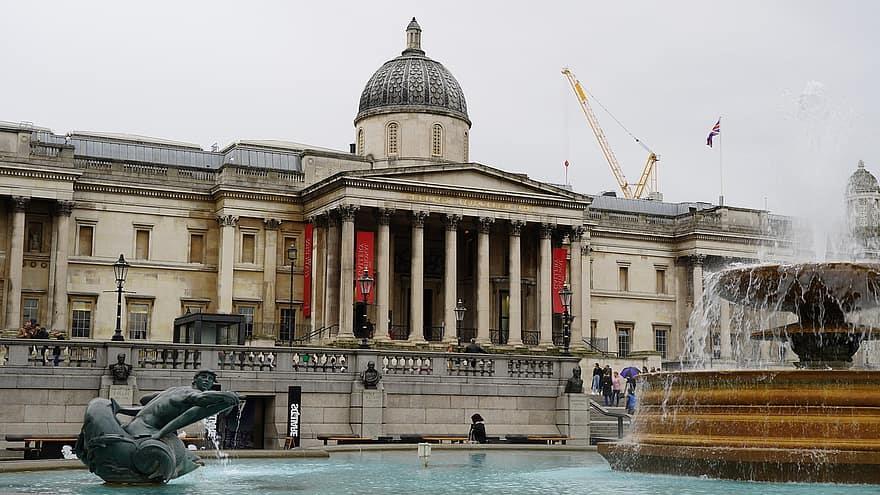
1 minute read
Assembly structures
Sai A. Pradhan l L. S. Raheja School of Architecture Traversing Through Architecture
FIGURE 56: NATIONAL LIBRARY OF BRITAIN
Advertisement
NEAR TRAFALGAR SQUARE (SOURCE- PIKIST) When we walk on the streets, various characteristics of the buildings help us in the identification of the function that they contain. The ease of accessibility into public structures makes them stand out from the surroundings. In Scandinavia an old proverb says, “people come where people are”. Permeable edges facing the streets allow free movement into the structure which increases the activity in and around the structure. This builds a sense of community as people interact with each other and the members of the community flock towards it.
Defined area for assembly and vehicular movement is provided at the entrance of the structure. A set back from the footpath behaves as a buffer area between the structure and the moving pedestrian and vehicular traffic. A grand entrance with a double heighted ceiling adds majesty to the functions inside the structure. Public buildings reflect the community and must cater to their needs. The space around a public structure promotes community interactions. When a public plaza is placed adjacent to a public structure, the library, theatre, etc. act as landmark destinations that attract users towards it.
Public structures have minimal windows to block visual access into the functional areas, making the break out zones very important. These areas connect the occupants with the surroundings and the users on the ground floor. In structures like libraries, these break out areas form intimate spaces for the users to relax and be one with the space around.
As a reflection of the society, the structure should carry qualities of its community and local character onto the design façade in the form of materials and ornamentations. They create an icon and allows interaction between the members of the society and the governing body as well.







